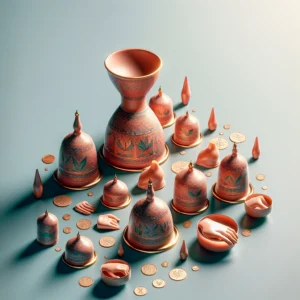Maximize Your Health with Hijama Wet Cupping Therapy: Comprehensive Insights and Benefits
Hijama, commonly known as wet cupping therapy, is an age-old healing practice that employs suction cups to draw blood to the skin's surface. This fascinating technique involves making tiny incisions to facilitate the flow of blood, which is believed to assist the body in its detoxification processes by eliminating harmful toxins. The cups can be crafted from various materials including glass, bamboo, or silicone, and are strategically placed on designated areas of the body to create a vacuum effect. This unique mechanism not only boosts blood circulation but also fosters holistic health and overall well-being.
During a Hijama session, the suction created is believed to stimulate blood flow and enhance the body's innate healing abilities. Many patients report experiencing a distinct sensation of tightness or pulling at the sites where the cups are placed. Despite its unconventional nature, countless individuals find the therapy to be profoundly soothing, often leading to a deep sense of relaxation and enhanced overall wellness following their session. This unique therapy provides not just physical benefits but emotional relief as well, making it a comprehensive approach to health.
Although Hijama may be unfamiliar to some, its therapeutic advantages have gained considerable acknowledgment, establishing it as a sought-after choice among holistic health enthusiasts. As you explore the intricacies of this ancient practice, you are likely to develop a deeper appreciation for its distinctive role in enhancing personal health and wellness.
Key Benefits and Insights into Hijama Wet Cupping Therapy
- Hijama Wet Cupping Therapy is a revered alternative medicine technique that utilizes suction to facilitate healing and enhance blood flow.
- This approach has historical significance across numerous ancient cultures, including Egyptian, Chinese, and Middle Eastern societies, serving as a natural remedy for a wide range of health issues over the centuries.
- The comprehensive benefits of Hijama Wet Cupping Therapy include pain relief, improved circulation, detoxification, and an overall sense of relaxation.
- The Hijama method involves creating small incisions on the skin and placing cups to draw out blood and impurities from the body.
- Conditions such as migraines, back pain, arthritis, and respiratory ailments can be effectively managed through Hijama Wet Cupping Therapy.
 Understanding the Historical Significance and Evolution of Hijama Wet Cupping Therapy
Understanding the Historical Significance and Evolution of Hijama Wet Cupping Therapy
The origins of hijama can be traced back thousands of years, with historical references documented in ancient Egyptian, Greek, and Chinese medical texts. Notably, Hippocrates, often regarded as the father of modern medicine, underscored its effectiveness in addressing a diverse array of health concerns. Within Islamic culture, Hijama holds a revered position, frequently referenced in Hadiths—the sayings attributed to the Prophet Muhammad—highlighting its importance in these traditions and practices.
This cultural endorsement has cemented Hijama's enduring popularity, particularly among Muslim populations. As you delve into the extensive history of Hijama, you will uncover its dual purpose: addressing physical ailments while simultaneously nurturing emotional and spiritual healing. Ancient practitioners believed that by purging stagnant blood and toxins, they could restore both physical vitality and emotional equilibrium, thereby enhancing overall health.
Over the centuries, Hijama has evolved, absorbing various techniques and philosophies from different cultures, resulting in the modern practice we recognize today. Hijama is now embraced globally, with practitioners adapting traditional methods to meet contemporary health needs and preferences.
Uncovering the Extensive Therapeutic Benefits of Hijama Therapy
The therapeutic advantages of Hijama wet cupping therapy are both extensive and profound. Many individuals report substantial relief from chronic pain conditions such as migraines, back pain, and arthritis following treatment. The suction generated by the cups is believed to enhance circulation, which can lead to reduced inflammation and faster recovery from injuries. This natural healing mechanism supports the body's intrinsic ability to heal itself, making Hijama a popular choice for those seeking alternative therapies.
Furthermore, beyond the physical benefits, many find that Hijama also alleviates stress and anxiety, contributing to a holistic enhancement of their overall sense of well-being. Practitioners frequently associate Hijama with detoxification, as the process is thought to effectively eliminate impurities from the bloodstream. This cleansing action can lead to increased energy levels and bolster the immune response, promoting a healthier lifestyle.
As you contemplate the potential benefits of this therapy, it is crucial to recognize that individual experiences may vary significantly. While some patients may find immediate relief, others might not notice changes right away. However, many practitioners advocate for regular sessions as an essential part of a holistic health and wellness strategy, underscoring the importance of consistency in achieving optimal results.
 A Comprehensive Guide to the Hijama Process: What You Should Know
A Comprehensive Guide to the Hijama Process: What You Should Know
Upon arriving for your Hijama session, your practitioner will initiate a discussion regarding your health history and any specific concerns you wish to address. This initial consultation is essential for customizing the treatment to cater to your unique needs. After ensuring your comfort, the practitioner will identify specific areas of your body for treatment, often targeting points that correlate with your symptoms or areas of tension.
The therapy typically begins with dry cupping, where cups are applied to your skin to create suction without any incisions. After a brief duration, the cups are removed, and small incisions are made on the skin using a sterile blade or lancet. The cups are then reapplied to extract a controlled amount of blood, promoting the therapeutic benefits of the treatment.
While this aspect of the procedure may seem intimidating, many individuals report experiencing only minimal discomfort during the incisions. Each session generally lasts between 30 minutes to an hour, depending on your personalized treatment plan, making it a relatively quick and manageable experience.
Identifying Conditions and Ailments Addressed by Hijama Therapy
Hijama wet cupping therapy is utilized to alleviate a broad spectrum of conditions and ailments. Many practitioners endorse its effectiveness for managing musculoskeletal issues, including back pain, neck pain, and joint discomfort. Athletes often seek Hijama for muscle recovery and injury prevention, thanks to its ability to enhance circulation and reduce inflammation, making it a preferred treatment in sports medicine.
In addition to addressing physical discomfort, Hijama is also believed to provide relief for respiratory conditions such as asthma and bronchitis by promoting optimal lung function and assisting in mucus clearance. Some individuals explore this therapy to tackle digestive issues and hormonal imbalances. As you investigate the diverse applications of Hijama, it is essential to consult with a qualified practitioner who can guide your treatment in alignment with your particular health concerns.
 Important Safety Considerations and Potential Risks of Hijama Wet Cupping Therapy
Important Safety Considerations and Potential Risks of Hijama Wet Cupping Therapy
Although Hijama wet cupping therapy is generally deemed safe when conducted by a trained professional, there are several risks and precautions to consider. Temporary side effects, such as bruising or mild discomfort at the sites of cupping or incisions, may occur; however, these effects typically subside within a few days, making the overall experience manageable.
It is crucial to ensure that your practitioner adheres to strict hygiene standards to minimize the risk of infection. Certain individuals should approach Hijama with caution or avoid it altogether. If you have bleeding disorders, are pregnant, or have specific skin conditions, it is vital to discuss these factors with your practitioner before undergoing treatment to ensure your safety.
By staying informed about potential risks and maintaining open communication with your provider, you can make a well-informed decision regarding the suitability of Hijama for your wellness journey, ensuring a safe and beneficial experience.
The Growing Popularity of Hijama: A Contemporary Trend in Holistic Health
In recent years, there has been a notable resurgence in interest surrounding alternative therapies, particularly Hijama wet cupping therapy. As more individuals seek holistic health solutions, this ancient practice has regained its prominence in both Eastern and Western societies. Social media has played a pivotal role in spreading awareness and information about Hijama, with many users sharing their positive experiences and outcomes in various online platforms.
The increasing popularity of Hijama can also be attributed to a broader acceptance of integrative medicine, which merges traditional treatments with alternative therapies for a more comprehensive healthcare approach. As you explore this trend, you may observe that more wellness centers and clinics are incorporating Hijama into their service offerings, making it increasingly accessible for those interested in exploring its potential benefits and enhancing their well-being.
 Tips for Finding a Qualified Practitioner for Effective Wet Cupping Therapy
Tips for Finding a Qualified Practitioner for Effective Wet Cupping Therapy
Finding a qualified practitioner for Hijama wet cupping therapy is crucial to ensure both safety and efficacy during your therapeutic experience. Begin your search by looking for local practitioners specializing in this therapy; many holistic health centers or acupuncture clinics frequently include Hijama as part of their wellness offerings. It is essential to seek practitioners who possess formal training in cupping techniques and have a proven track record of successfully treating various health conditions.
Before scheduling your session, consider reaching out for an initial consultation to discuss your health concerns and inquire about their treatment approach. A reputable practitioner will take the time to understand your needs, address your questions, and provide a thorough explanation of the treatment process. Additionally, reading reviews or seeking recommendations from friends or family can assist you in finding a practitioner who aligns with your health and wellness aspirations.
By taking these informed steps, you can confidently embark on your journey into Hijama therapy, assured that your chosen practitioner possesses the requisite skills and expertise to support your health goals.
Commonly Asked Questions About Hijama Wet Cupping Therapy
What is Hijama wet cupping therapy?
Hijama wet cupping therapy is a traditional form of alternative medicine in which a therapist applies cups to the skin to create suction, believed to promote healing by enhancing blood flow and minimizing inflammation in the body.
How does Hijama wet cupping therapy work?
During Hijama wet cupping therapy, the therapist performs small incisions on the skin and then places a cup over the incision to create suction. This process draws a small amount of blood, which is thought to aid in removing harmful substances from the body and encourage overall healing.
What benefits can be expected from Hijama wet cupping therapy?
Advocates of Hijama wet cupping therapy claim that it can assist with various conditions, including pain relief, inflammation reduction, improved blood circulation, detoxification, and enhanced relaxation. However, scientific support for these claims remains limited, highlighting the need for further research.
Is Hijama wet cupping therapy safe?
When performed by a trained and qualified therapist, Hijama wet cupping therapy is generally regarded as safe. However, there is a risk of infection if proper hygiene and sterilization protocols are not observed, emphasizing the necessity of receiving treatment from a reputable and experienced practitioner.
What side effects might occur from Hijama wet cupping therapy?
Some potential side effects of Hijama wet cupping therapy may include temporary discomfort, bruising, and mild skin irritation at the cupping site. Rarely, there may be a risk of infection or scarring, making it essential to choose a skilled practitioner.
Who should avoid Hijama wet cupping therapy?
Hijama wet cupping therapy is not advisable for individuals with specific medical conditions, such as hemophilia, leukemia, or those who are pregnant. Consulting with a healthcare professional before undergoing this therapy is critical, particularly for those with underlying health concerns to ensure safety.
Presented By: Hijama Therapy
The Article: Hijama Wet Cupping Therapy Benefits You Should Know appeared first on https://mcrtherapies.co.uk
The Article Benefits of Hijama Wet Cupping Therapy You Need to Know appeared first on https://mcrtherapies.com/”>https://mcrtherapies.com
The Article Hijama Wet Cupping Therapy: Essential Benefits to Discover Was Found On https://limitsofstrategy.com


Comments are closed